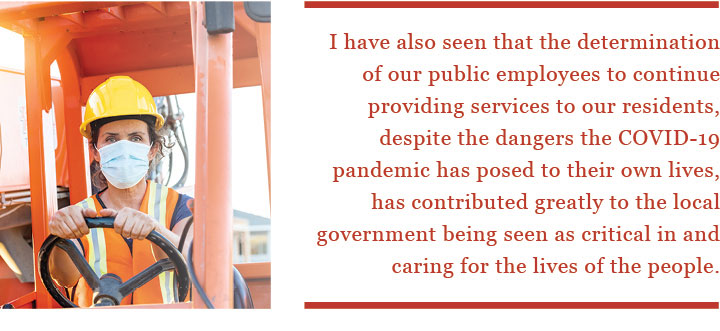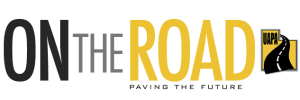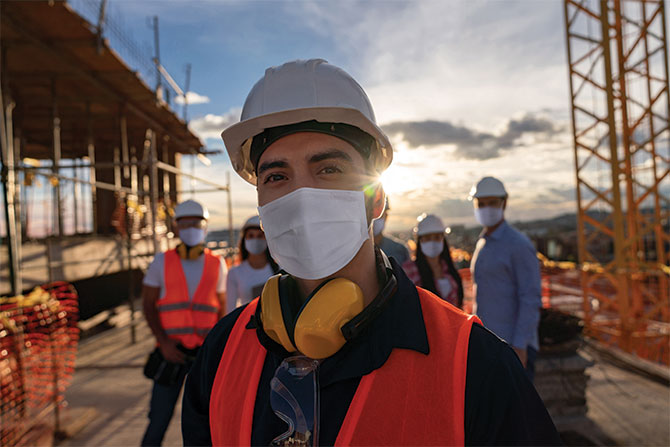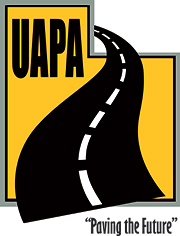By The Utah Asphalt Pavement Association
Our own members weigh in on the impacts, opportunities and industry outlook resulting from COVID-19.
- Derek Andersen is the owner of Andersen Asphalt. The company is a trusted asphalt maintenance contractor with state-of-the-art equipment, resources, and expertise to help customers find solutions that provide long-term value. With its proven asphalt maintenance treatments, customers significantly extend the life of their pavement and avoid costly replacement. The company is extremely meticulous and detail-oriented with its work. Employees use rigorously tested and proven products and techniques to provide customers with the very best solutions.
- Jeremy Lapin is the public works director for Saratoga Springs. This city is located in Utah County on the northwest shores of Utah Lake. The city was incorporated in December 1997 and currently has about 32,000 residents. It is in the top five fastest-growing cities in Utah, with a build-out population of more than 120,000 residents.
What are the main challenges your organization has encountered as a result of the coronavirus pandemic?
Derek: The main challenges we have faced are the many changes in our overall environment. Challenges have included some large customers freezing spending, customers going out of business and keeping our employees safe and healthy. We have had to make adjustments that have come with a learning curve.
Jeremy: The first major challenge is the uncertain financial impact. While many businesses have been required to shut down or limit service, public utilities must continue operating. Water, wastewater, and other essential services must be maintained. In fact, due to an increase in sheltering and working from home, we have seen an overall increase in the demand placed on our utilities. Conversely, revenue has declined due to forbearances in shut-offs due to nonpayment.
The second major challenge is the risk to our workforce posed by the pandemic. Most public works employees need to be “on-site” to complete the critical tasks necessary to ensure the operation of our municipal services. They are unable to shelter at home, potentially putting them at greater risk. If the virus were to spread among employees, this could necessitate the use of quarantine and threaten operations.
Although President Kennedy was wrong when he said the Chinese word for “crisis” also meant “opportunity,” sometimes a crisis does present a chance to improve. Have you seen any opportunities as a result of the coronavirus pandemic?
Derek: The pandemic has presented us with the opportunity to seek a different business that we previously didn’t look for. For some customers, spending was frozen, and work that was to be scheduled was put on hold. We found that as heavily as some industries were impacted, many were thriving. We had the opportunity to seek and capture some of those “thriving companies.”
Jeremy: This pandemic has forced us to digitize many components of our operation to protect our employees and better serve our customers. In turn, these systemic changes in our organization have streamlined many processes, resulting in increased efficiency across our organization.
What have your experiences during the pandemic taught you?
Derek: The pandemic has taught us to be more creative. We needed to be creative in our approach to capturing new business and ensuring the health of our employees and customers.
Jeremy: One is the importance of mutual aid agreements. Not only is it a lifeline to have a network and relationships among other municipalities in the region, but it is also a great opportunity for our employees to see and experience how other agencies work.
Another is that information sharing is the key to success in emergency responses. It is difficult to plan correctly for what seemed to be a very uncertain situation. During this pandemic, we have developed several mechanisms for information sharing, learning from other organizations, and diffusing best practices.
How will your organization’s plans for 2021 be affected?
Derek: We plan to continue helping our customers find the best solutions for their pavement maintenance needs. We must use what we have learned since the pandemic began and continue to make sound adjustments as new challenges arise.
Jeremy: The increased occurrence of remote work and the transition to the use of digital services is here to stay. We will continue to refine and update our practices and procedures to fully embrace this new “normal.” As long as system demand and revenue streams remain unpredictable, we must remain prepared to deal with issues of organizational capacity. We will likely limit the expansion of our workforce for the foreseeable future while relying on the use of contractors and mutual aid agreements to deal with periods of high demand.

What long-term consequences do you expect within the industry?
Derek: I expect overall spending to be lower and production to weaken. Many companies are faced with restrictions, consumers are spending less, there have been budget cuts and layoffs, and in some cases, a shutdown of operations. I expect this to affect our industry long term but think we will prevail and improve due to this pandemic.
Jeremy: I think the strategies devised during this pandemic to strengthen the resilience, effectiveness, and responsiveness of our public services will become part of the industry’s best practices. We will remain better prepared to deal with this type of issue in the future.
I have also seen that the determination of our public employees to continue providing services to our residents, despite the dangers the COVID-19 pandemic has posed to their own lives, has contributed greatly to the local government being seen as critical in and caring for the lives of the people. The ongoing work of first responders has, in many places, elevated a sense of trust in local government.
The Utah Asphalt Pavement Association
This story appears in Issue 4 2019-2020 of On The Road Magazine.









